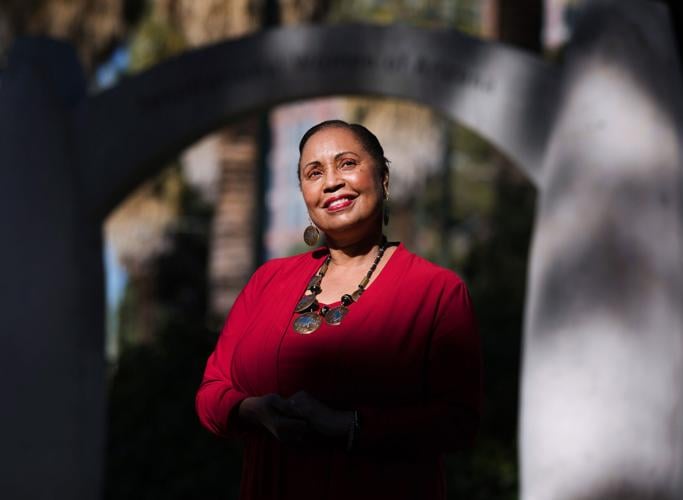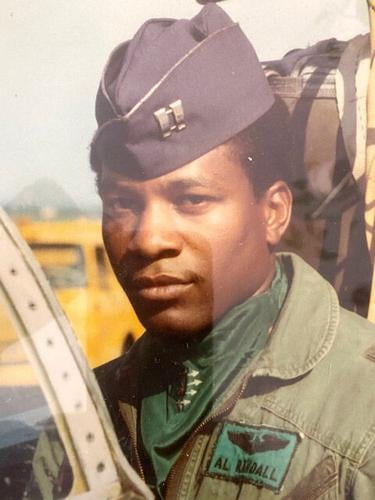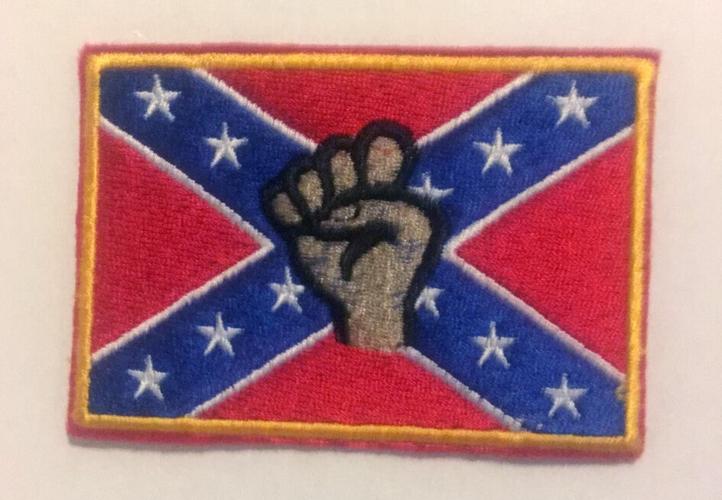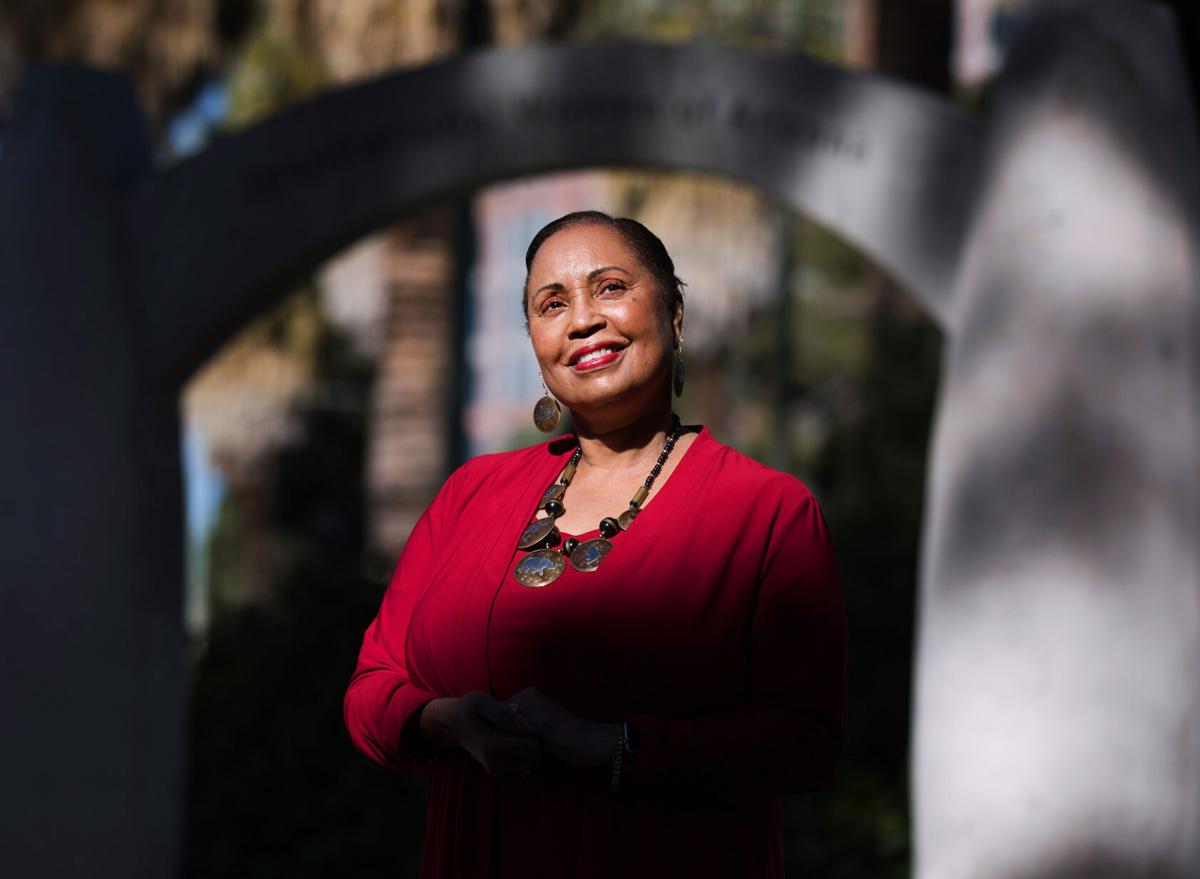Like a fair number of life’s most interesting adventures, this one began with a question from a child.
A year ago, Beverely Elliott’s grandson, Jeremiah, was assigned to write a first-grade report about a prominent Black American, so he asked his “nanu” if Tucson had a museum dedicated to local, history-making people like that.
Her answer: It does now.
The African American Museum of Southern Arizona debuted online on Dec. 31, and plans are in the works for its first physical exhibit within the next month or two in the Student Union at the University of Arizona.
Eventually, museum organizers hope to open a permanent collection somewhere on campus in partnership with the UA Foundation.
“I’m most excited about us being a hub for folks to stop in and say, ‘I didn’t know that,’” Elliott said. “That’s what we want people to say when they come in the museum: ‘I didn’t know that.’”
Elliott is leading the effort with her husband, UA basketball legend Bob Elliott, and a wide-ranging team of founders, board members and advisors from the public and private sectors.
As the name suggests, the focus is on local history and the Arizonans who made it.
But Elliott said there are also broader migration stories to be told about “where people came from and why they’re here.”
“I think that what we’re going to find is that we have a lot of reach outside of Southern Arizona, but with families that have been here for generations,” she said.
Recording stories
The museum’s website (aamsaz.org) is a work in progress, with new material being added regularly. Already, though, it includes some general information about history and culture, links to other museum collections, details about coming attractions, and its highlight so far: a growing slate of video interviews with prominent Tucsonans.
Elliott and company began collecting oral histories in September, when they were interviewing as many as three people a day.
Nine of the finished recordings have been added to the website, with many more in the works.
“So many people don’t know they’re on our list,” Elliott said with a laugh. “We have about 60 people, and some of them are here and some of them are not.”
“That’s what I’m really looking forward to: getting the word out about all these amazing people that came before us and what impact they had on the community,” she said.
In one interview that hasn’t been posted quite yet, former Air Force fighter pilot Albert Randall talks about learning to fly F-4 Phantoms at Davis-Monthan before being assigned to a base in northern Japan in 1969.

Air Force Capt. Albert Randall poses in the cockpit of his F-4 Phantom while stationed at an airbase in northern Japan in 1969.
At that time, he said, a number of airmen at the overseas base regularly wore Confederate patches on their sleeves, so the Louisiana native had his own patch made with a Black Power fist superimposed over the flag of the Confederacy.
When his commanding officer ordered him to stop wearing the provocative patch, Randall refused unless the others were forced to remove theirs as well.
Almost immediately, his protest prompted a unitwide directive: The American flag was the only one they were permitted to wear.
It didn’t stop there, either. In a matter of days, Randall said, the directive spread through the entire Air Force and beyond, until it applied to everyone wearing a uniform for the Department of Defense. And all because of a principled pilot who trained in Tucson.
For historical figures who have passed away, the museum is recording “Legacy Stories” told by their relatives, friends and contemporaries. Two have been posted so far, with more on the way.
In one, Richard and Doreen Davis talk about her mother, Quincie Douglas, namesake of the Quincie Douglas Center at Silverlake Park, who lobbied the city for improvements to her South Park Neighborhood and launched a free shuttle service for low-income residents.

Air Force fighter pilot Albert Randall had this Black Power patch made in response to other airman in his unit who wore Confederate flag patches on their sleeves. Randall said his quiet protest in 1969 prompted new rules prohibiting U.S. servicemembers from wearing any flag besides the American one.
In the other, Super Bowl champion coach Tony Dungy, a friend of Bob Elliott’s since childhood, shares the story of his father, Wilbur Dungy, who served with the famed Tuskegee Airmen.
Holographic guides
Beverely Elliott said the museum’s initial “pop-up” exhibit now being planned for the UA Student Union will cover four or five related topics and feature a combination of artifacts and digital presentations.
By scanning QR codes, visitors will be linked through their smartphones to a pair of holographic tour guides, reluctantly played by Beverely and Bob Elliott.
The holograms were Bryan Carter’s idea.
Carter is an associate professor in Africana studies and the director of the Center for Digital Humanities at the UA. He has won international attention for his virtual-reality recreation of 1920s Harlem during the height of the Jazz Age.
He said he jumped at the chance to help design exhibits at the new museum as soon as he heard about it.
It seemed like the perfect opportunity to show off some of the cutting-edge work being done by his department and allow students to apply what they’re learning in a real-world setting.
With the help of some grant money, Carter is hoping to develop things like virtual reality simulations and digital, 3D renderings of artifacts, places and even people, all of which can be used to squeeze a great deal of information into limited exhibition spaces.
Carter is even looking at using something called a temi robot — picture an autonomous, rolling podium topped with an interactive touchscreen — to answer questions and guide people through the displays.
“So it won’t just be a traditional museum,” he said. “Usually these kinds of technologies don’t make it so quickly to (smaller) museums dedicated to underserved groups.”
Elliott said they hope to launch their “pop-up museum” at the UA Student Union sometime in March, possibly with an “exceptional authors” event celebrating local Black writers around the time of the Tucson Festival of Books.
Their original goal was to open the temporary exhibit in time for Black History Month in February, but the pandemic spoiled that idea.
As old as Tucson
Elliott started researching the possibility of opening a museum dedicated to local Black history within a week or two of her grandson’s question.
She said she’s “always been a history buff,” and her interest only grew after a high school Black history class in her native Michigan and a course she took at Pima Community College after she moved to Tucson in 1974.
More recently, the retired public school counselor has gotten some valuable advice and ideas to emulate from the African American Cultural and Historical Museum of Washtenaw County, an Ann Arbor, Michigan-based institution where she has served as an advisory board member for years.
Elliott said African American history in Southern Arizona goes back a lot further than people might think, so the new museum will, too.
Today roughly 5% of Tucson’s population is Black, but during the Presidio days of the late 1770s, that number was closer to 20% and included several prominent business owners and craftsmen, Elliott said.
“Where are those stories? What happened to those families and those people is something I’m hoping to uncover.”
The museum will also feature an impressive sports section, beyond the holographic version of Bob Elliott.
An exhibit is being planned on UA men’s basketball coach Fred Snowden — the first Black head coach at a major university — featuring personal items on loan from Snowden’s daughter.
Meanwhile, celebrated Tucson long-distance runner Abdi Abdirahman, a five-time Olympian, has offered some of his medals and memorabilia for display.
Ultimately, Elliott said, the museum’s mission is to offer something more than “just old historical things.”
“It will be a combination of Black life, images, artifacts and stories,” she said. “Stories are what connect us to each other anyway.”






